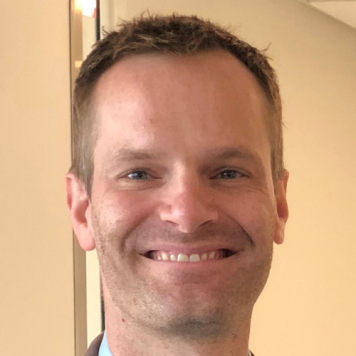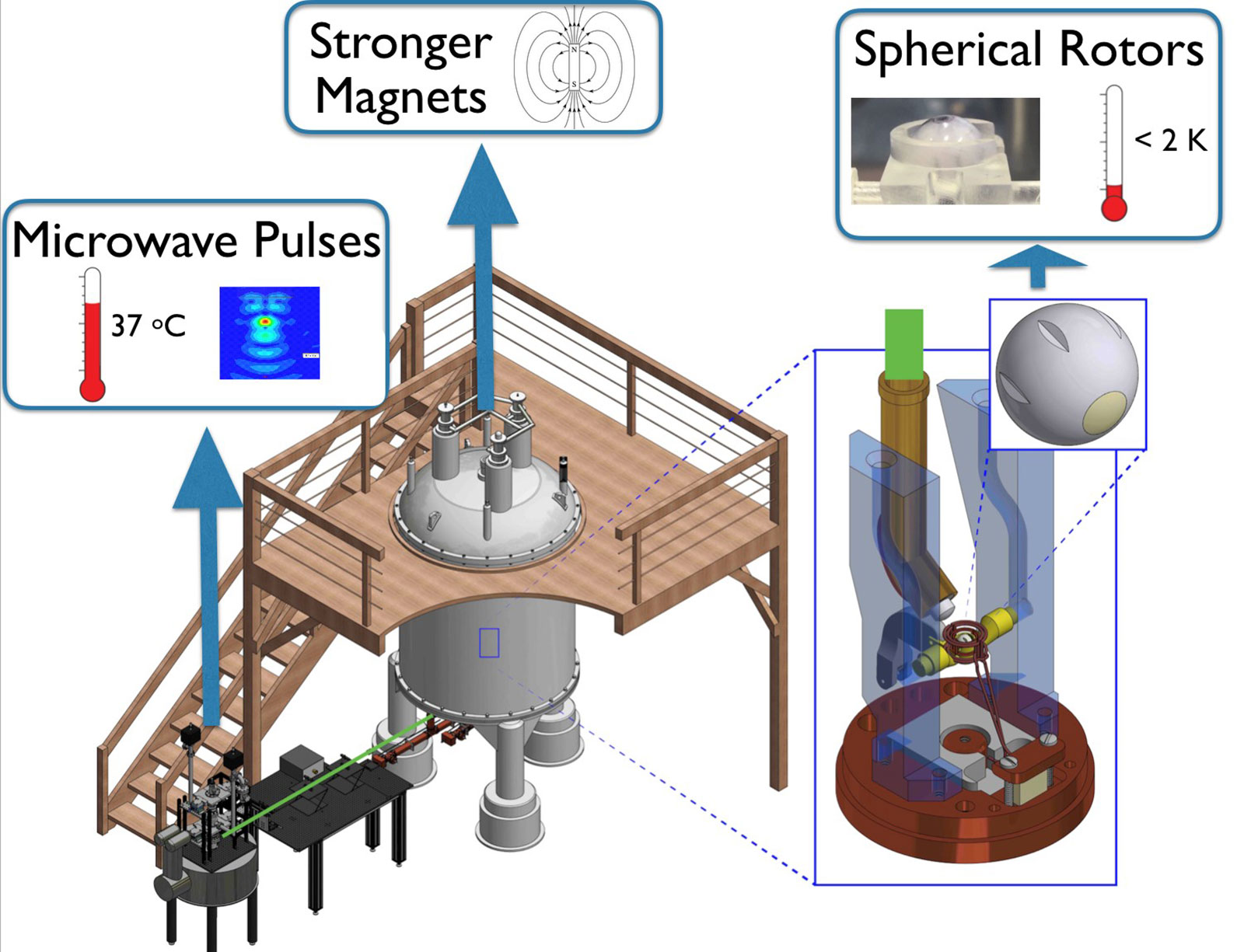#InauguralLecture: A talk with Alexander Barnes
- D-CHAB
- LPC
Revolutionizing nuclear magnetic resonance (NMR) spectroscopy and advancing drug development with the world's highest field NMR magnets are just two of Professor Barnes' many goals. On occasion of his inaugural lecture, he explains why German is important for chemists, how a sphere leads to signal amplification, and how biomolecular structures in human cells can be determined.

Professor Alexander Barnes' office in the basement of the LPC is sparsely furnished. Even more, the dark colored crash pad, which leans at the wall, catches the eye of the visitor. Barnes loves climbing and the mountains. He shares this passion with his wife and his four-year-old daughter. When he was appointed as professor at the D-CHAB in 2019, it was not hard for him to convince his wife to leave the USA and move to Zurich and the nearby mountains.
Shaped by the natural sciences
Barnes was born in St. Louis, Missouri. Most of his family has a science background: his father is a biochemist, his sister a neuroscientist, and his brother an astronomer and physicist. Barnes chose chemistry, which he studied at Whitman College. During his studies, he spent a year abroad in Germany to learn German. "My father studied there as well and used to tell us stories about that time, and it always sounded like such a blast and adventure," he explained. "Apart from that, German is the best language to learn if you are a chemist and want to learn a second language besides English. Chemistry is a very strong field in German-speaking countries."
After completing his studies, Barnes returned once more to Germany. Afterwards, he moved to Boston for his PhD in physical chemistry at MIT, where he learned how to develop new technologies: "When you create a new technology, you get a completely new view on things. No one else in the world has that view first to peer into nature. That is science to me.“ After seven years at MIT, Barnes went to Stanford for a postdoctoral position. Like his role model for technology development Elon Musk, he aimed to contribute to a better future, and thus joined a group that focused on HIV therapy. Back at Washington University, he became an assistant professor to support HIV cure research with his technological know-how. In 2019, he was appointed at ETH Zurich.

The future of NMR spectroscopy
Since September, Barnes is a full professor at the LPC and leads the group of Solid State NMR Spectroscopy. Six members of his former team joined him. His group now comprises ten to twelve people and will soon increase by another six members: "Three bachelor's students and three master's students," Barnes says, pleased to be adding ETH students to his group.
In fact, he has big plans. He still wants to support drug development, e.g. to completely cure HIV, by providing innovative technologies. For the development of drugs, it is important to know both the exact structures of the agent in the cell and the structures of the protein with which the drug interacts. To achieve this, NMR technology needs further development. NMR is a method where samples are exposed to a strong magnetic field and irradiated with radiofrequency (~1200 MHz). In this way, the chemical composition and 3D structure of small molecules as well as of proteins can be determined. "Nevertheless, to study proteins or other molecules in a natural human cell is still difficult with the current technology. The concentrations are often very low, and it takes a long time to obtain a useful signal," Barnes explains. The goal is therefore to obtain a stronger NMR signal.
Three methods for a stronger signal
Barnes wants to accomplish this in three ways: The first way is to use a higher magnetic field. Currently, the team is waiting for the arrival of a 28 Tesla magnet – the strongest in the world for this application, according to Barnes. "But we are also building magnets of our own. This way we can reach 50 Tesla, but actually we dream of 100 Tesla." The second drive is to reduce the temperature to 2 Kelvin during measurement, which also improves the signal. The third way is to transfer signal strength from electron spins to nuclear spins. As a result, the signal becomes 660 times stronger.

Moreover, Barnes and his team changed the shape of the sample cell. In principle, solid state NMR measurements require that the sample rotates very fast in order to sharpen the signal. Previously, the sample material was placed in a small cylinder. Barnes and his team are now using spheres instead, achieving a three times higher rotation speed, which has a positive effect on the signal as well. "Combining all these technologies, we get a signal that is strong enough to determine the structures in a cell," Barnes explains.
Interdisciplinary work as a basis for progress
The further development of NMR technology also holds great potential for collaborations. Apart from medicine, "NMR technology can also help in the development of catalysts," Barnes points out, "or in the production of substances that can extract CO2 from air. Furthermore, I see great opportunities in battery research." Initial collaborations are already underway. Whatever the next project may be, Barnes' main goal, as a scientist, is to achieve the greatest possible benefit for society. "But maybe I don't achieve this through research," he says while looking at his script for his Thermodynamics lecture, "maybe I achieve the greatest effect on society as a teacher, by inspiring my students.“